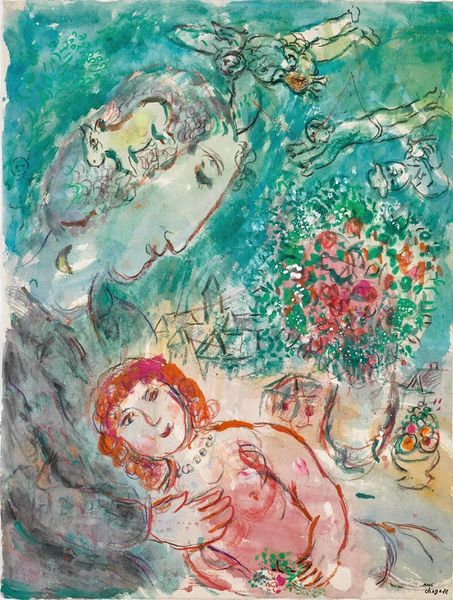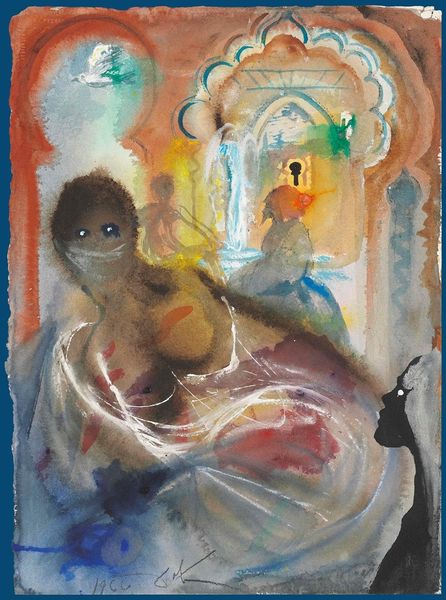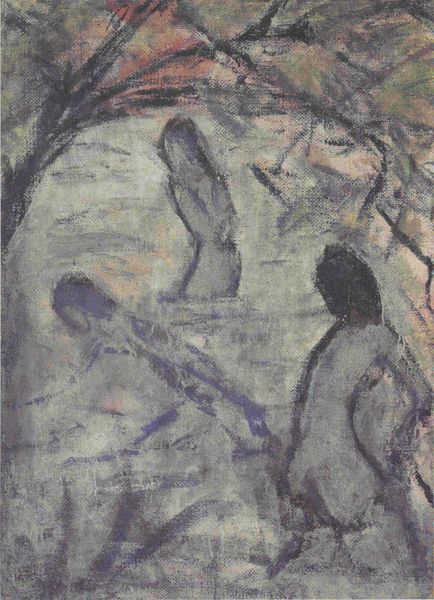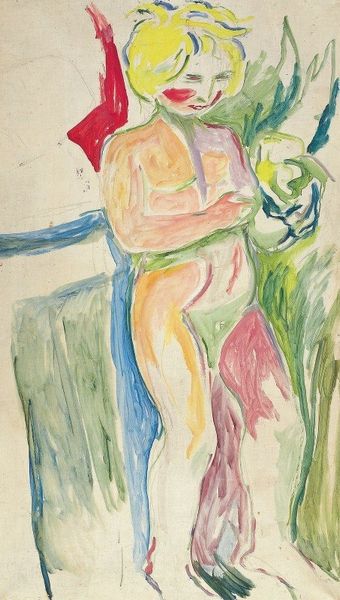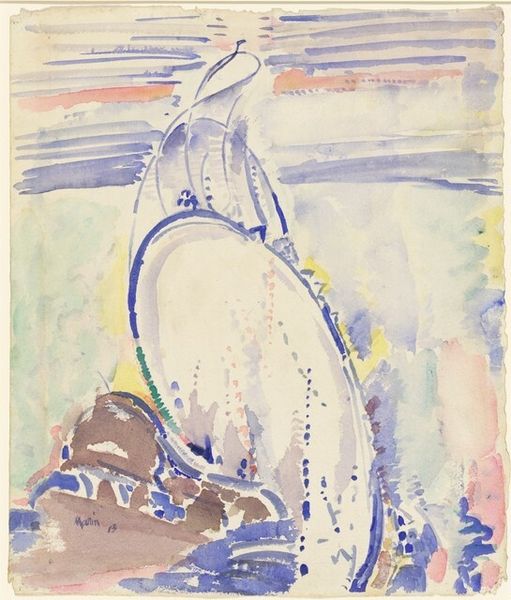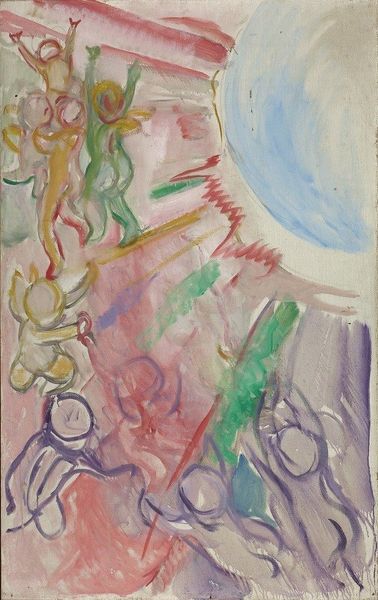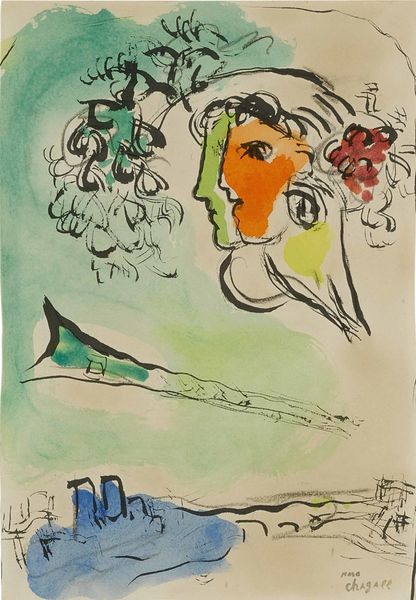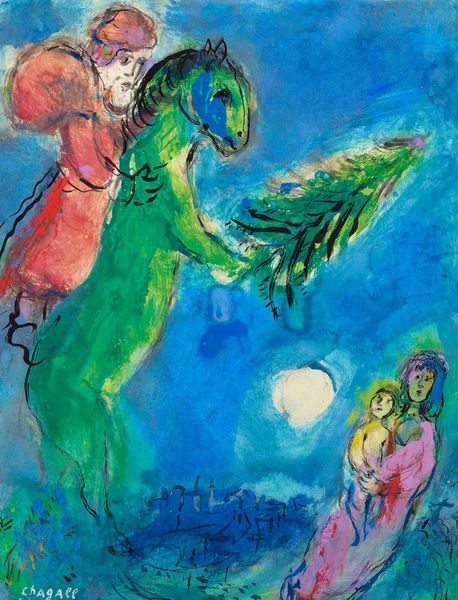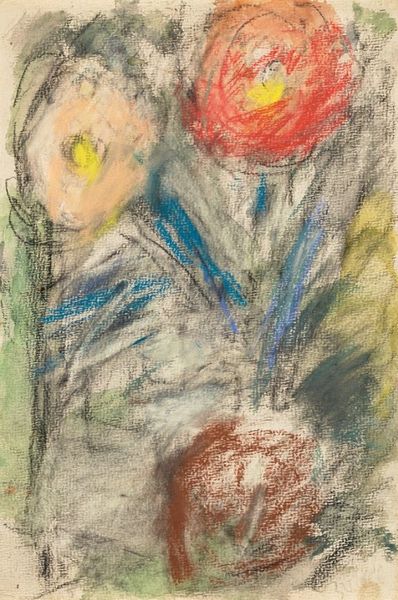
Copyright: Modern Artists: Artvee
Curator: Let's consider this enigmatic work by Marc Chagall, likely executed between 1947 and 1948, titled "Nu au coq." The artwork uses watercolor to present a rather dreamlike composition. What is your first reaction to it? Editor: It strikes me as strangely calm, despite the bizarre juxtaposition of figures. The blue and green hues create a muted, almost melancholic atmosphere. The rooster, especially, dominates, almost aggressively, given its bright colors amidst softer tones. Curator: It is important to recognize Chagall’s world. For example, the figure here offers interesting narratives of objectification, and how it is complicated and, frankly, sexualized even. Editor: The rooster indeed is quite charged! Bird imagery, especially roosters, are layered. Its red crest could be passion but also danger and sacrifice—often linked to stories of resurrection and rebirth. Then the woman could embody both vulnerability and power, perhaps reflecting society's multifaceted roles imposed upon women. Curator: I couldn't agree more, given Chagall's own complex negotiation of his identity and displacement, particularly following WWII. And while often framed within personal experiences, such symbols also invite examination of the social and political milieu from which he creates his works. Editor: What I appreciate is how he’s using this shared symbolic vocabulary to communicate emotion. Notice that the candlelight evokes hope—almost like flickers of resilience persisting through trauma, memory. There is a beautiful contrast between light and darkness, life and despair in such an otherwise surreal visual. Curator: Yes, considering "Nu au coq," through the lenses of historical trauma, allows one to examine intersectional themes within it. The figure as nude, next to such dominant and layered figure of a rooster allows for that. Editor: Precisely. Looking through symbolic depth opens to new interpretations, enriching experience of art. It's not just seeing the image but truly feeling its pulse across time.
Comments
No comments
Be the first to comment and join the conversation on the ultimate creative platform.
